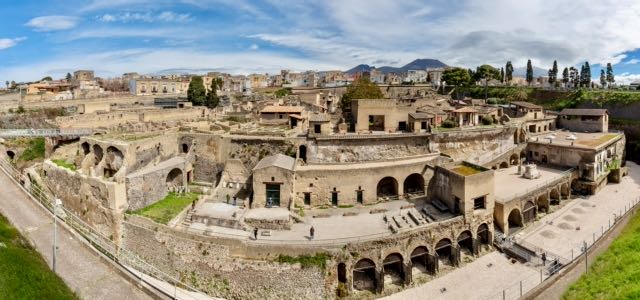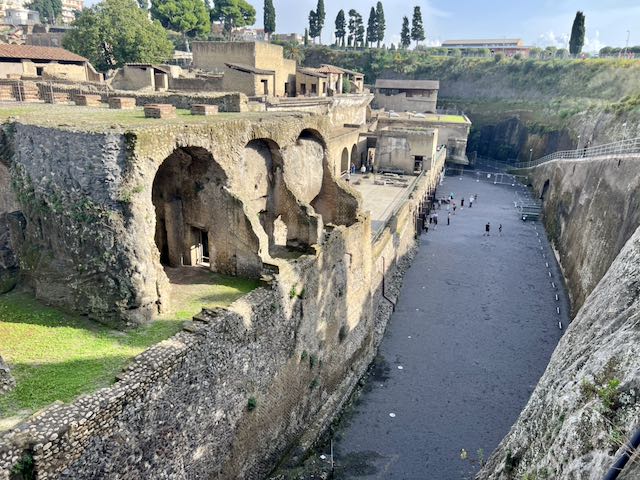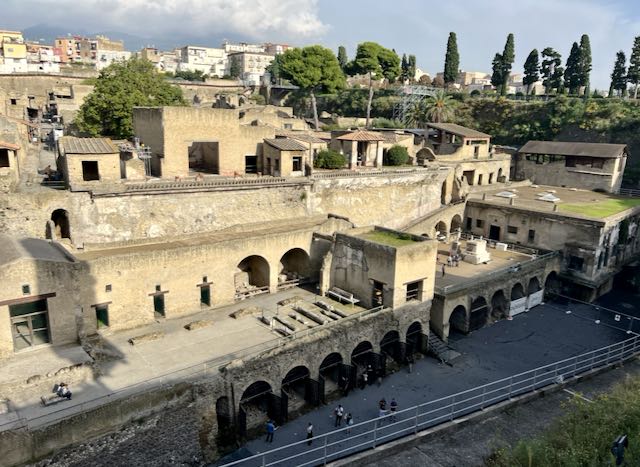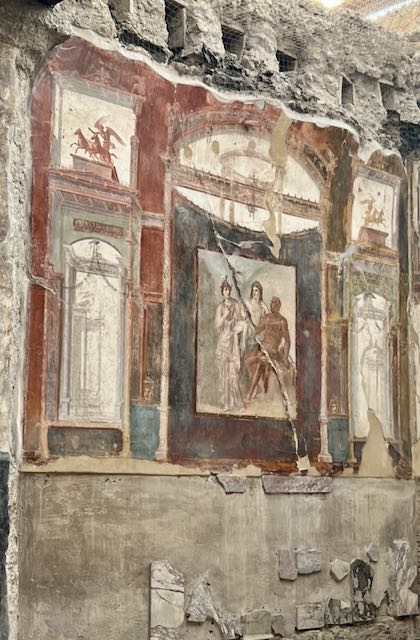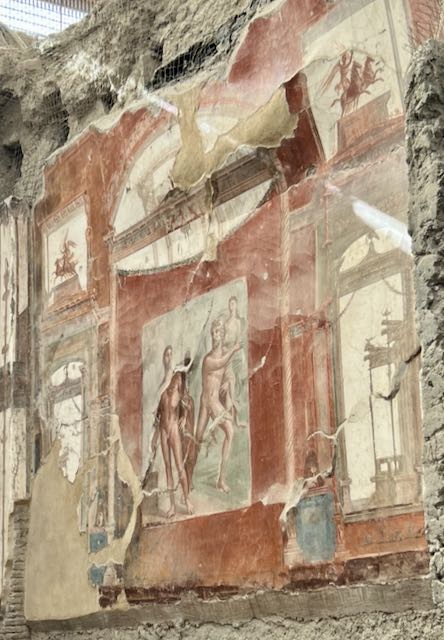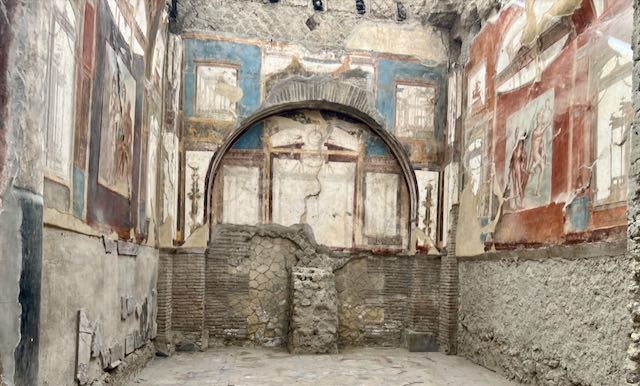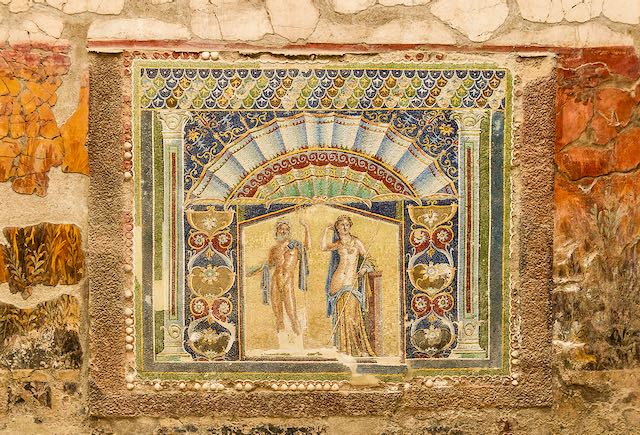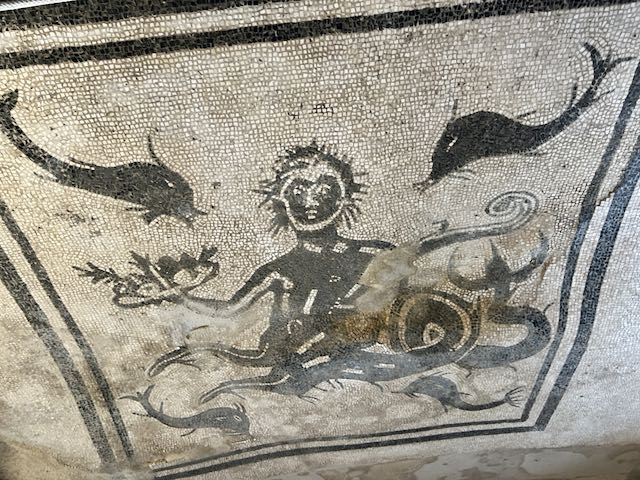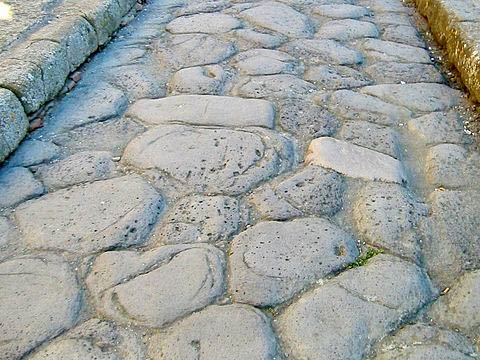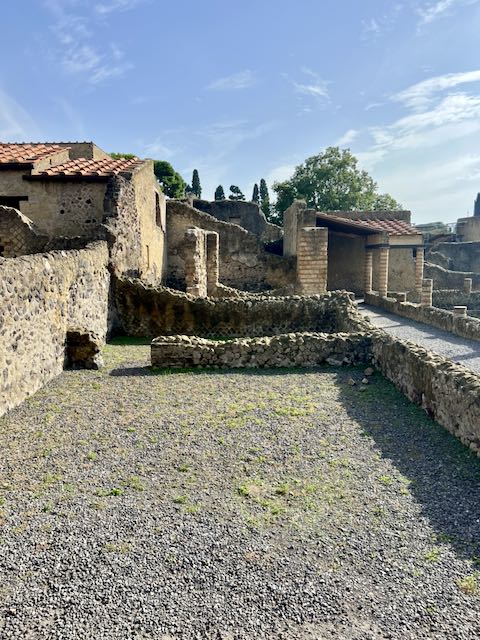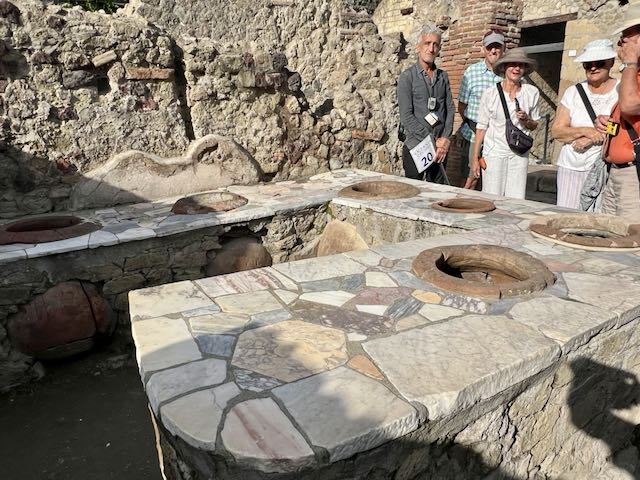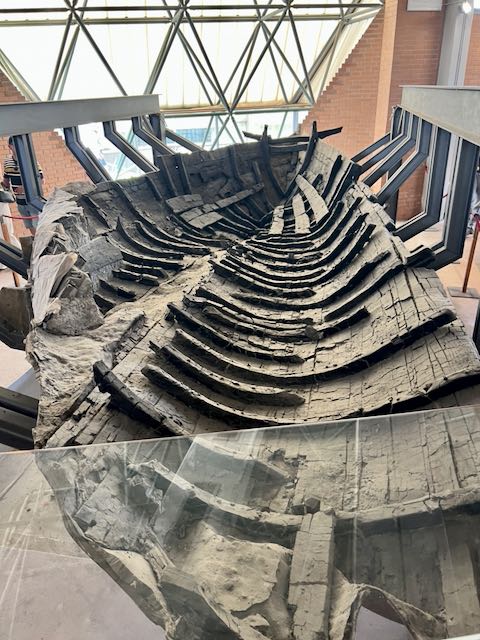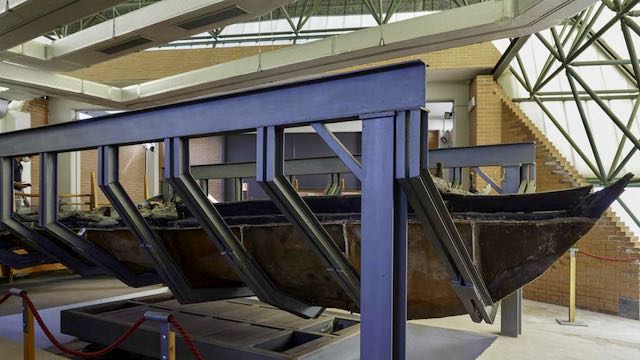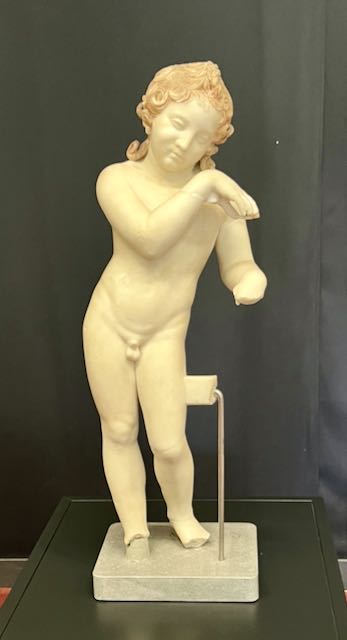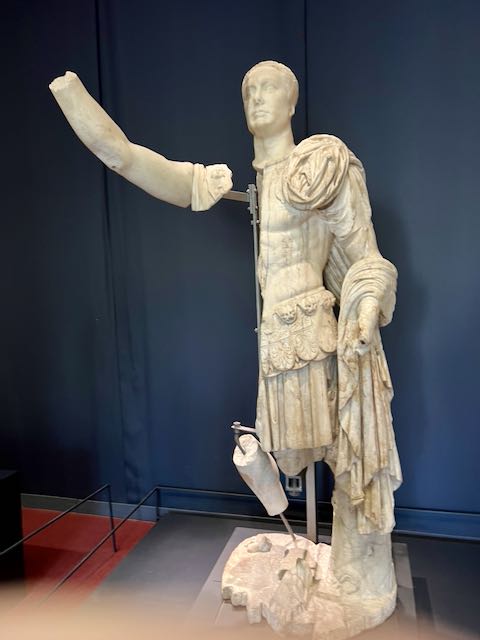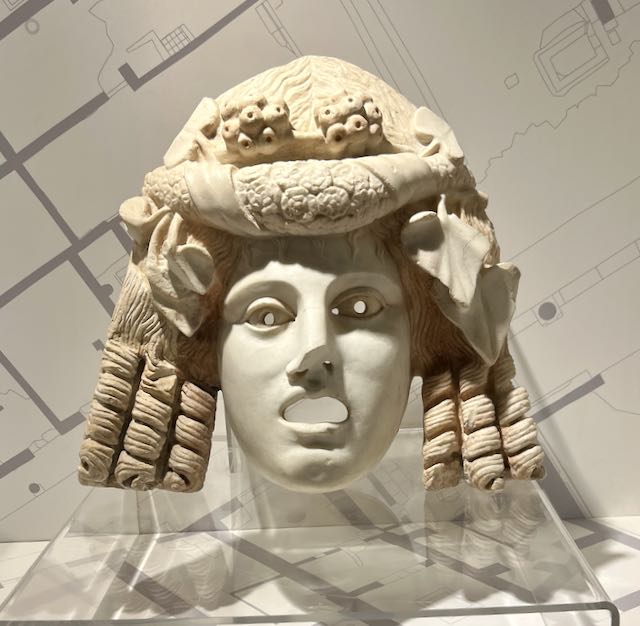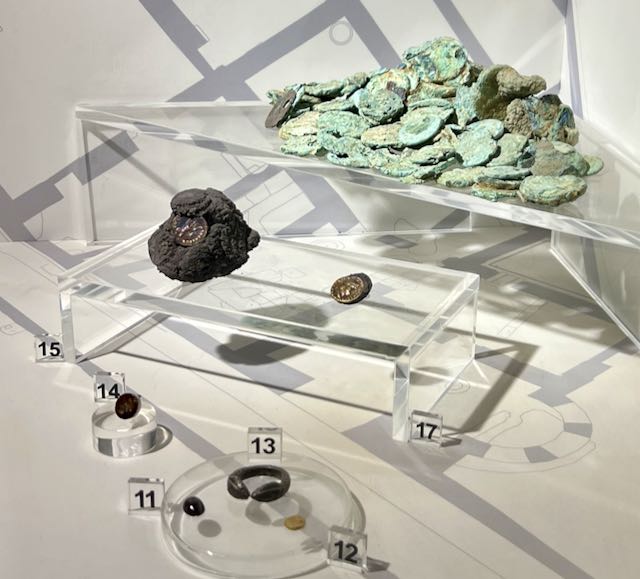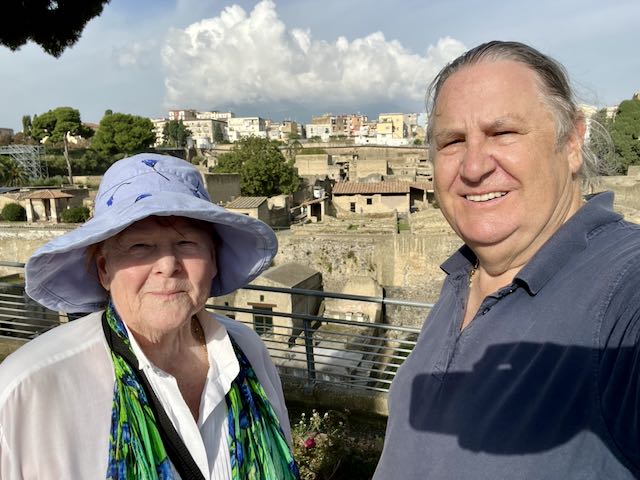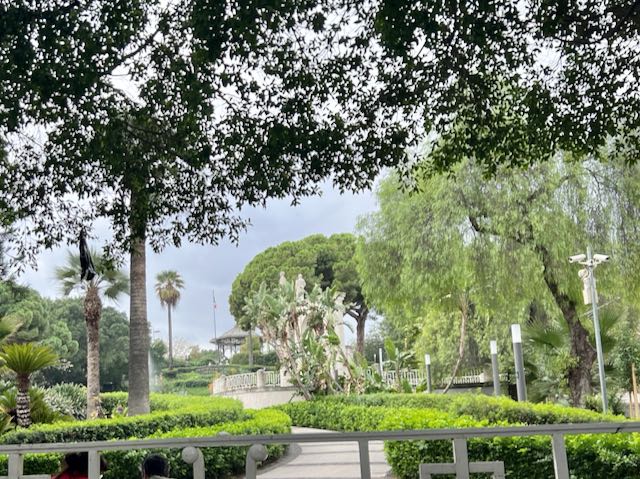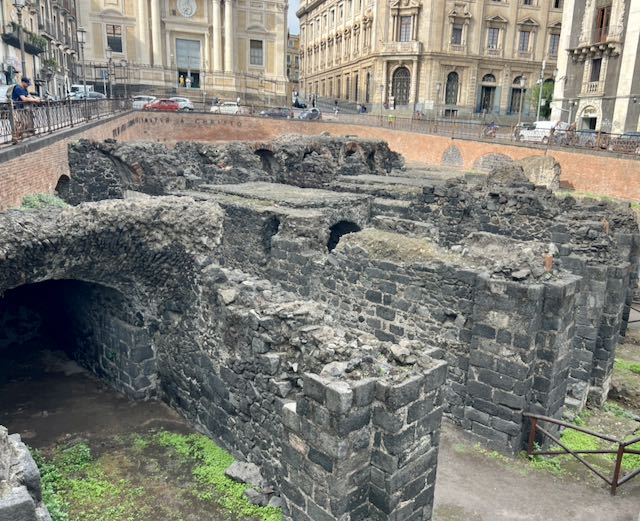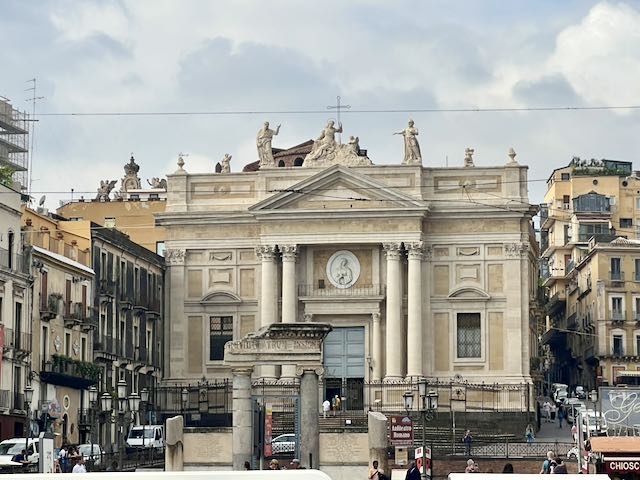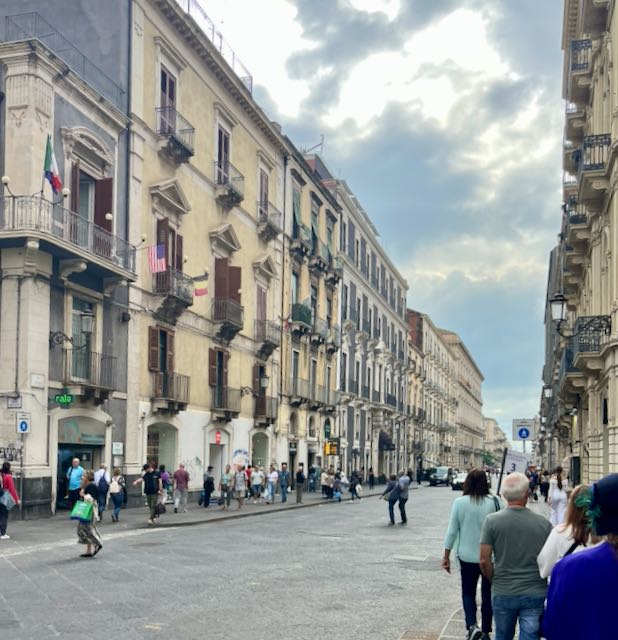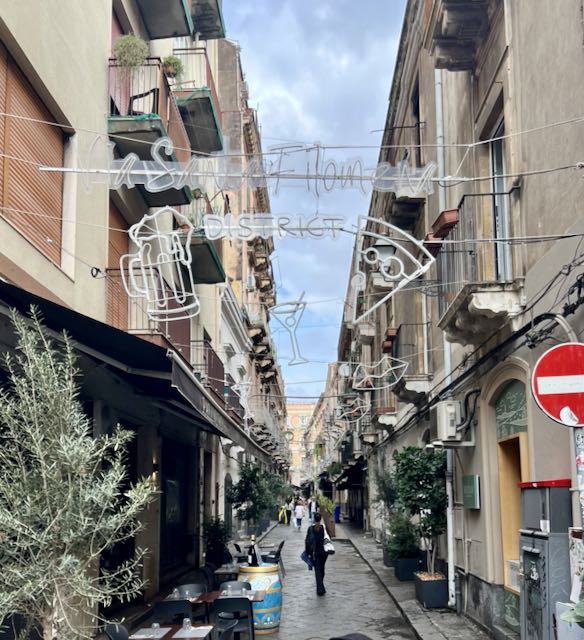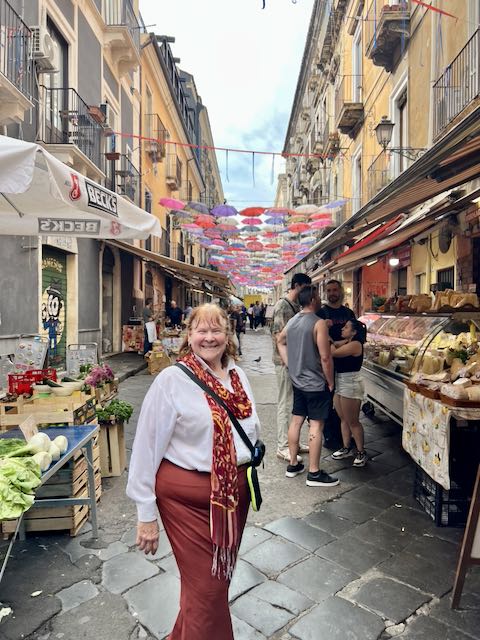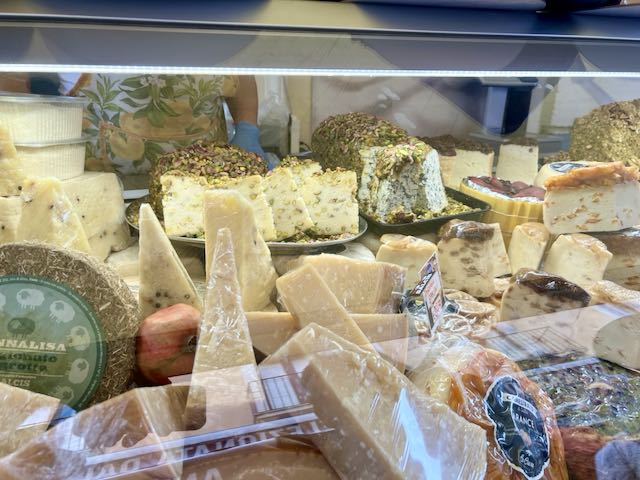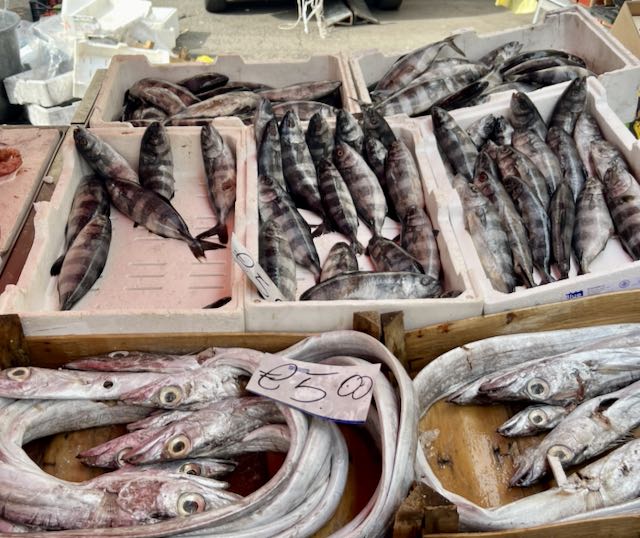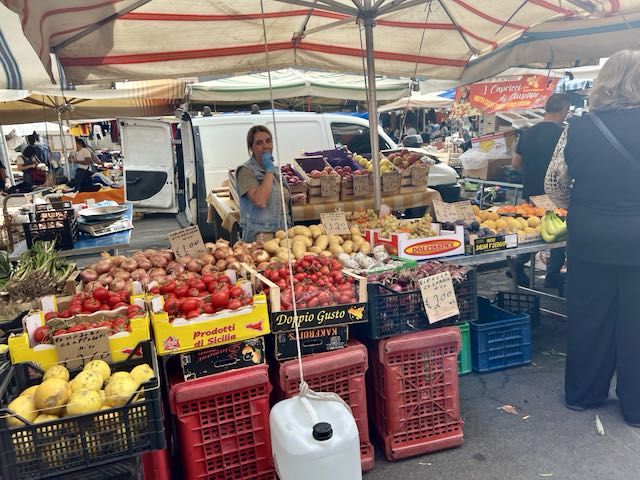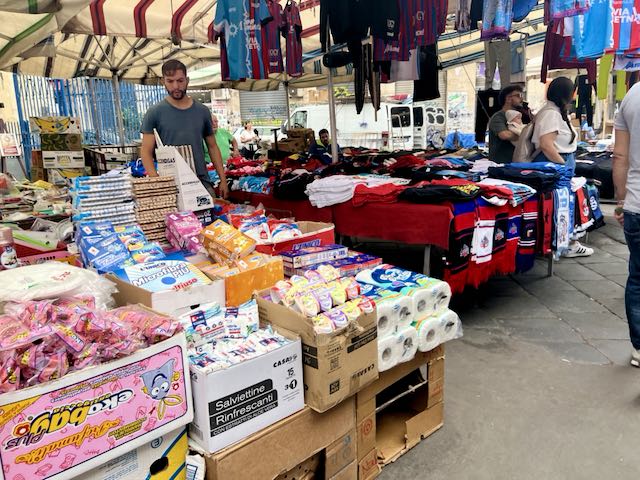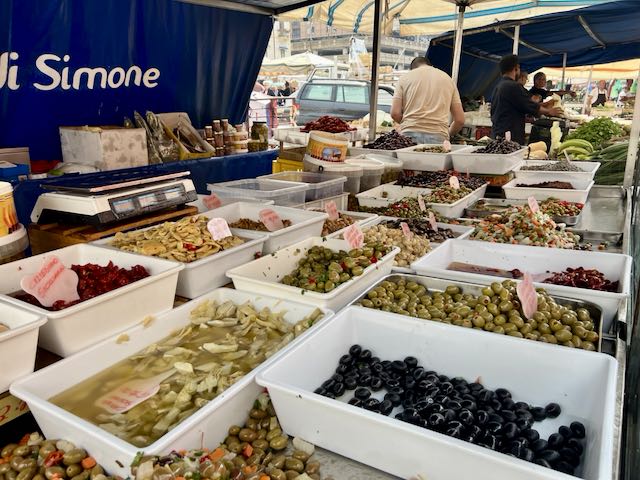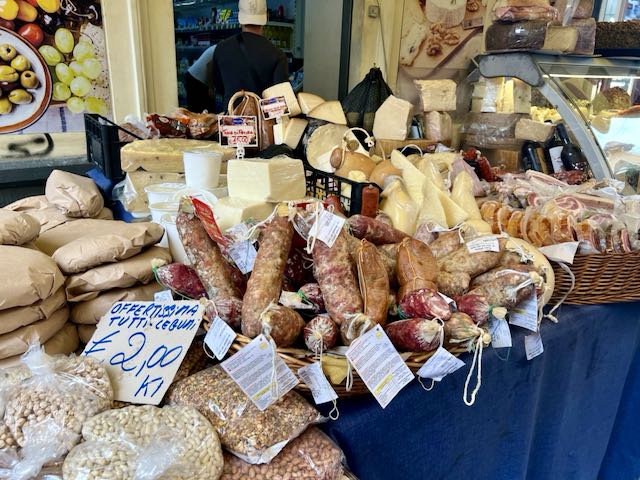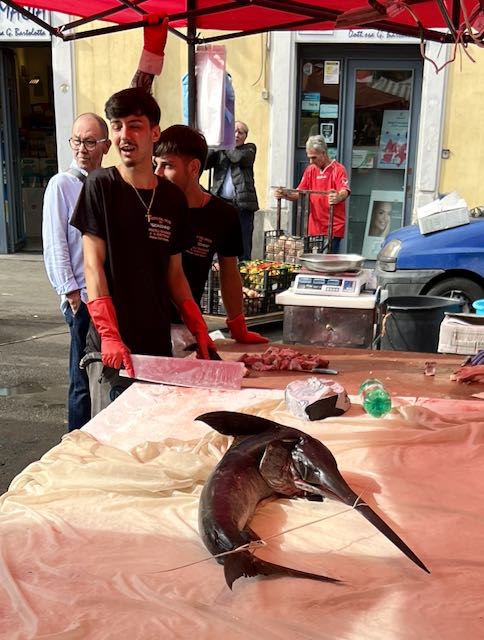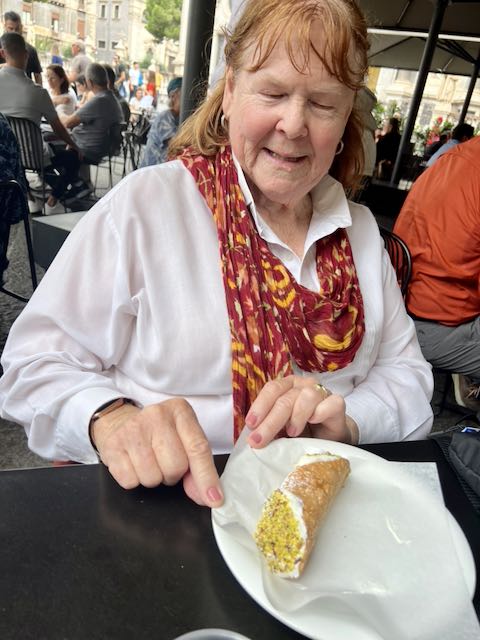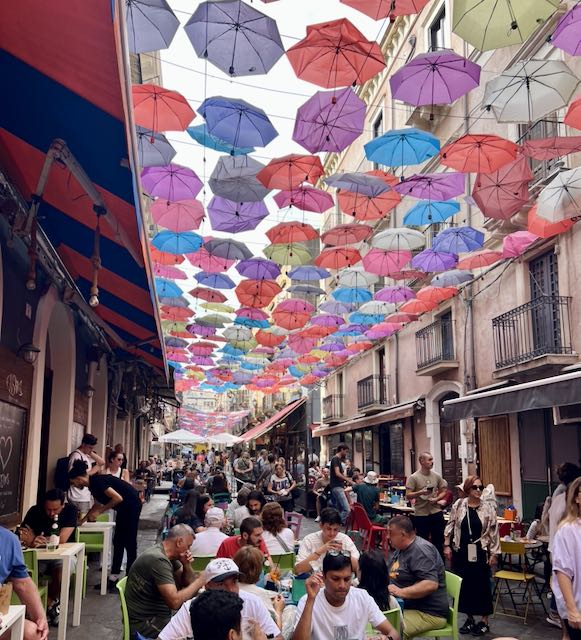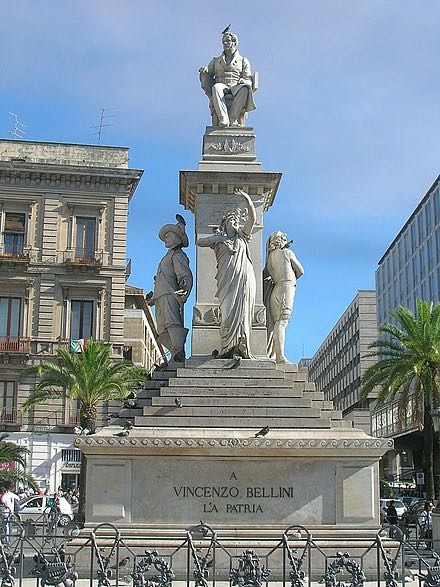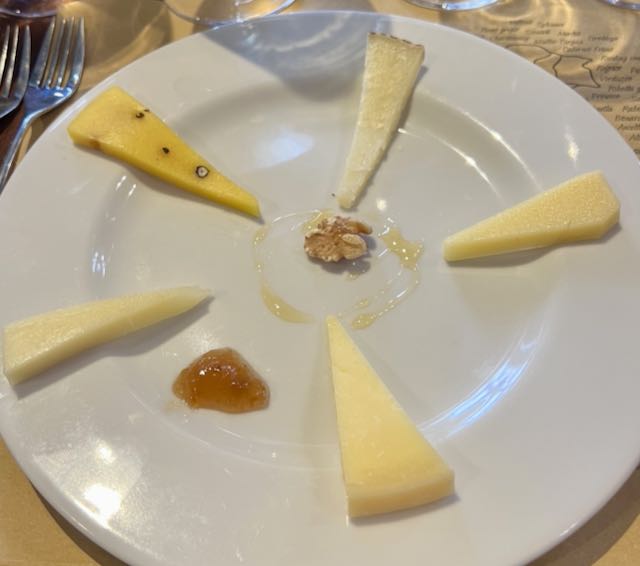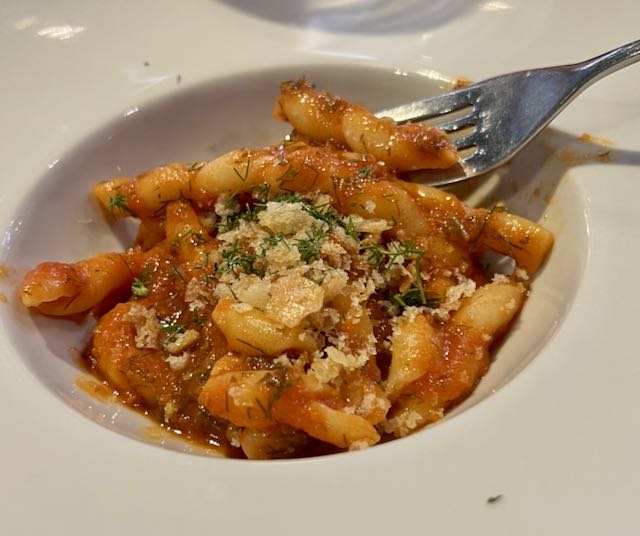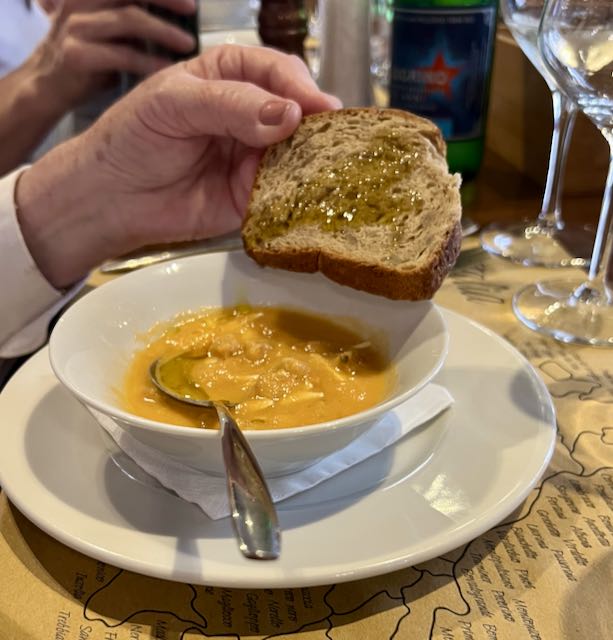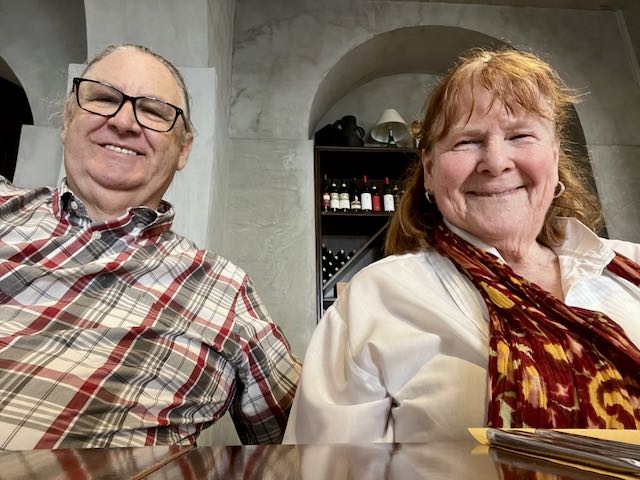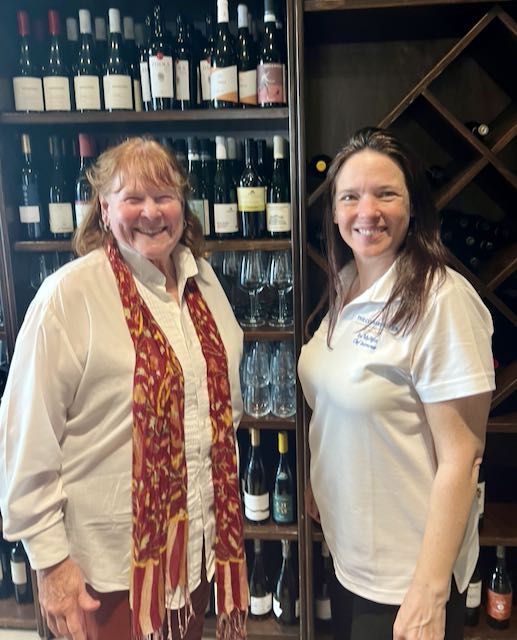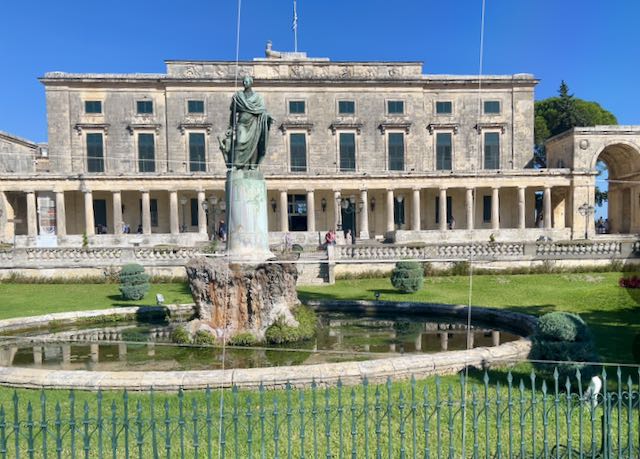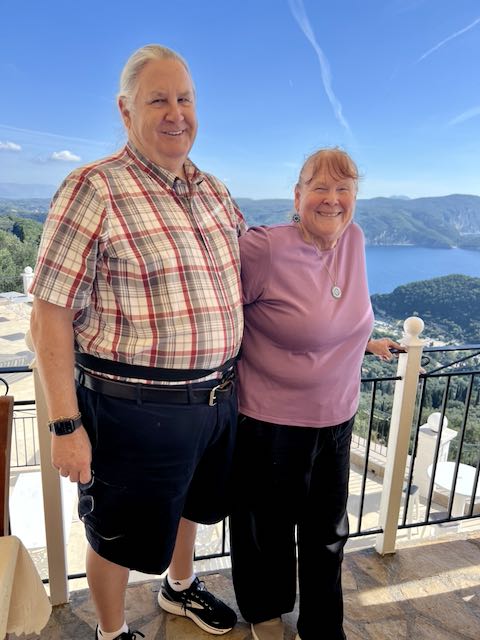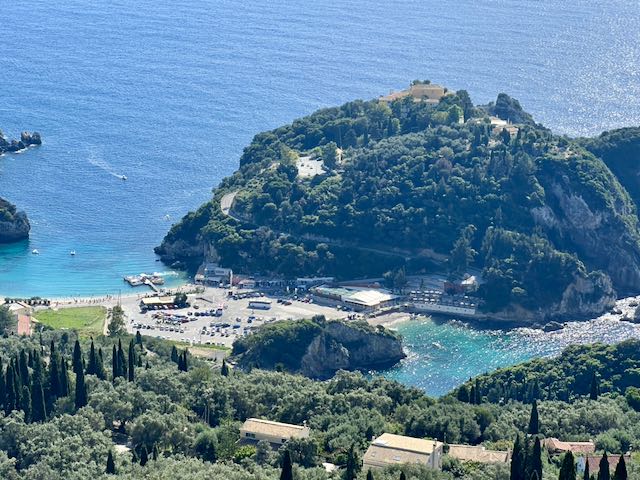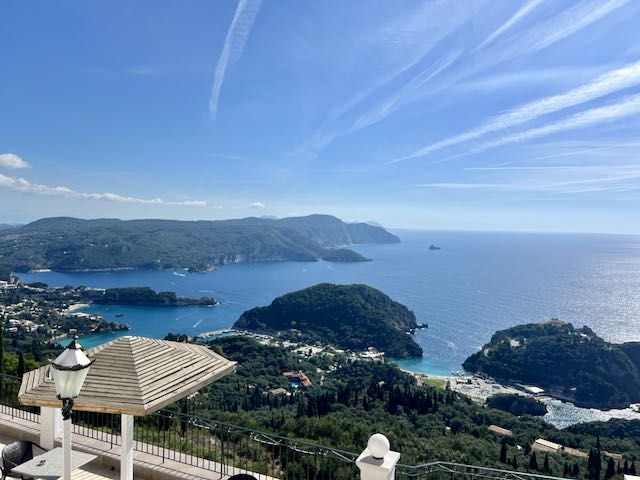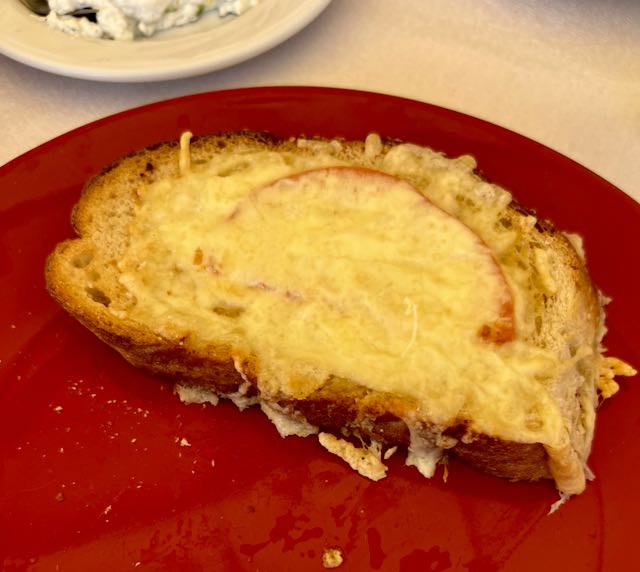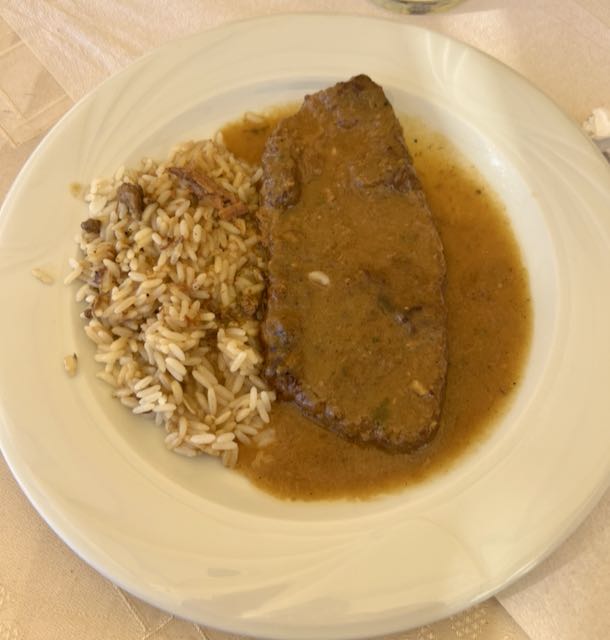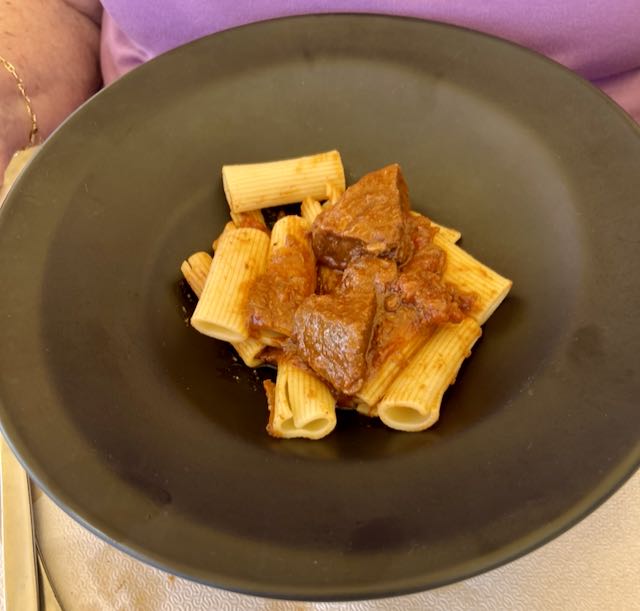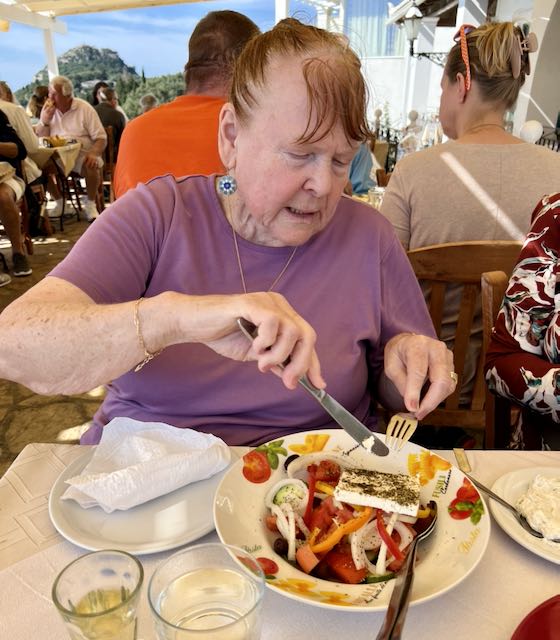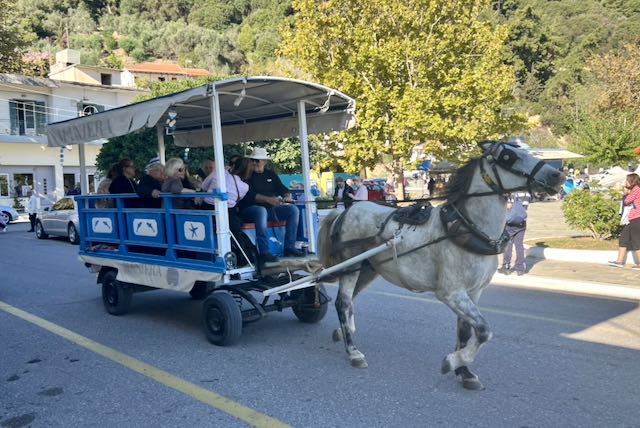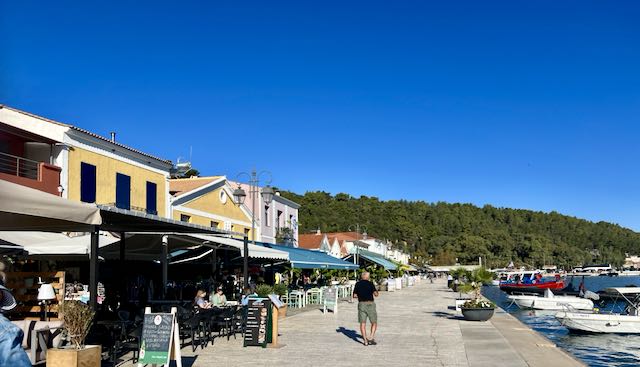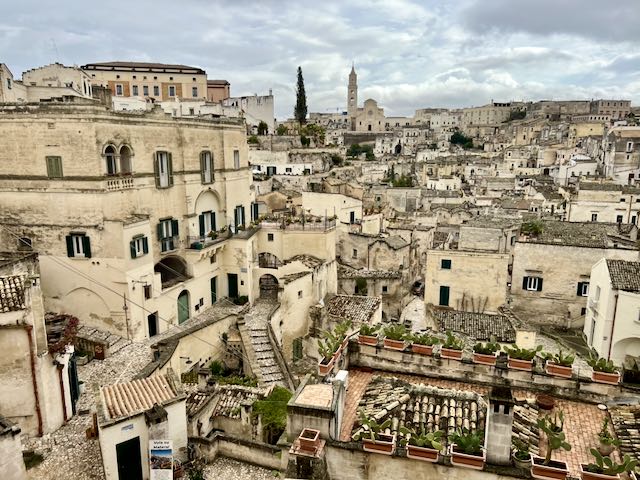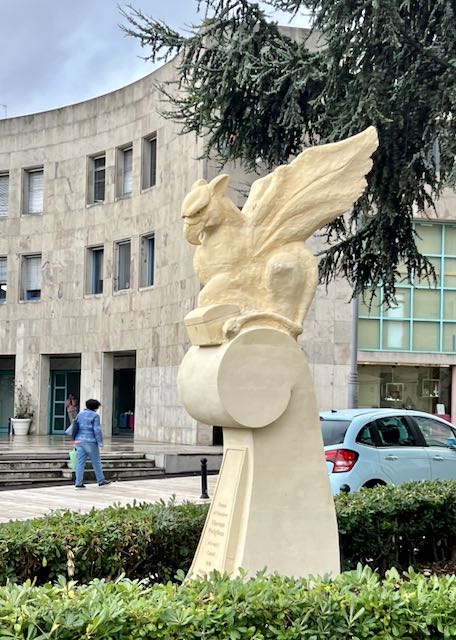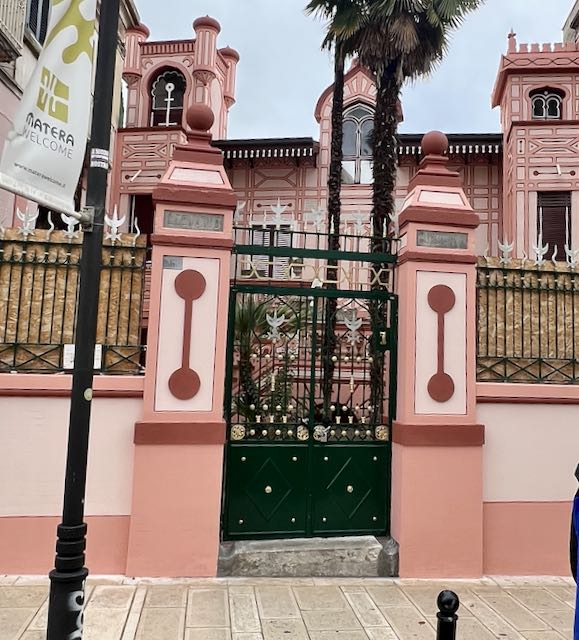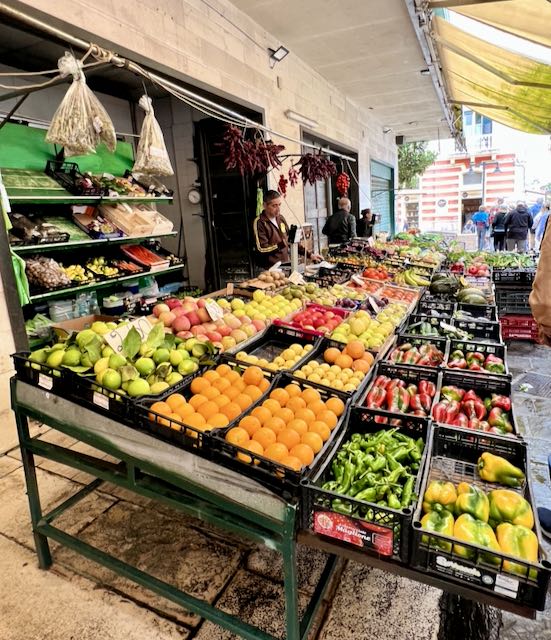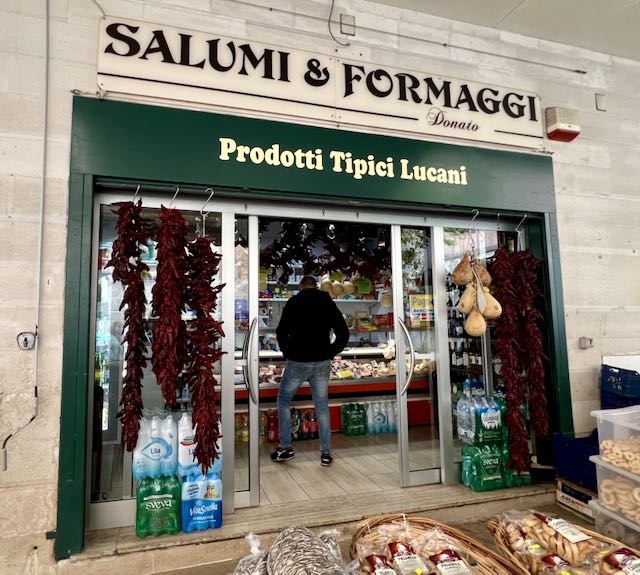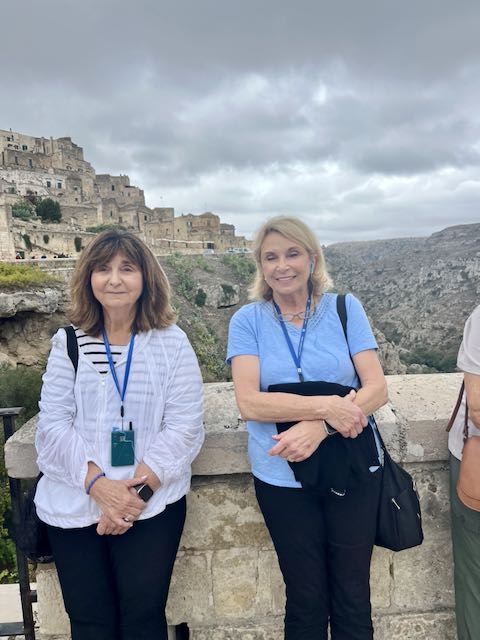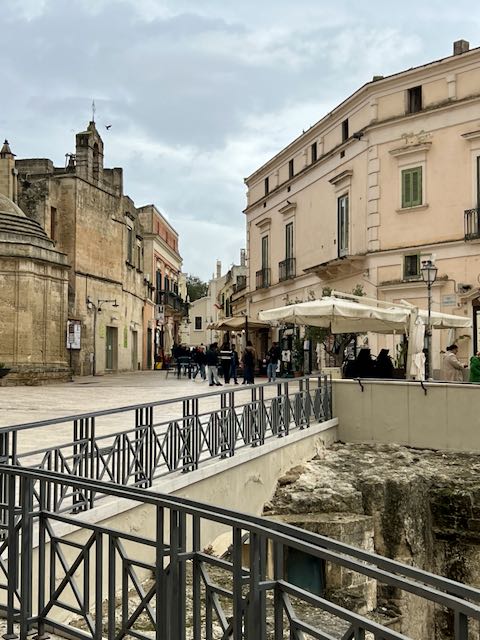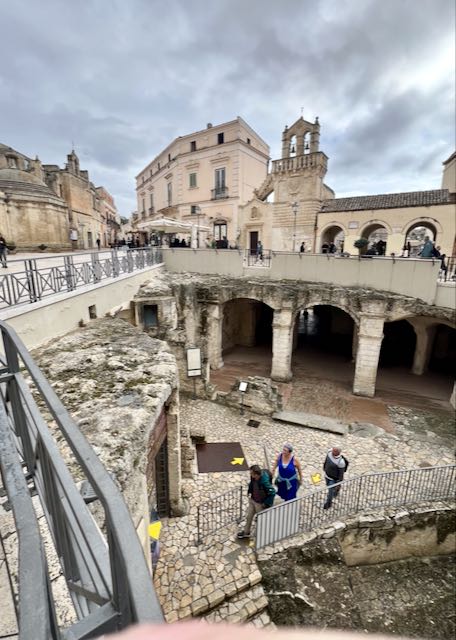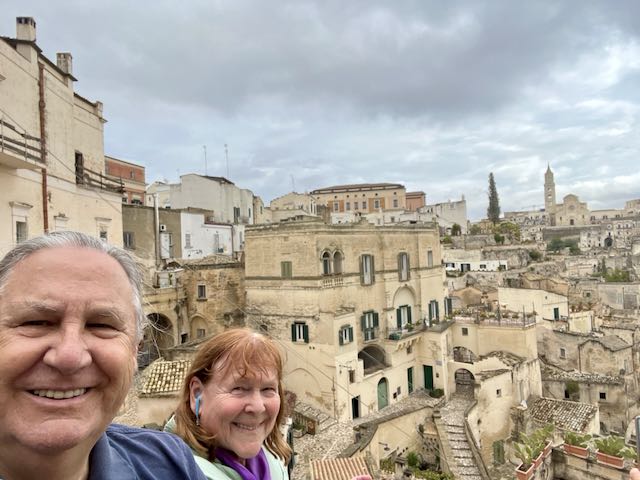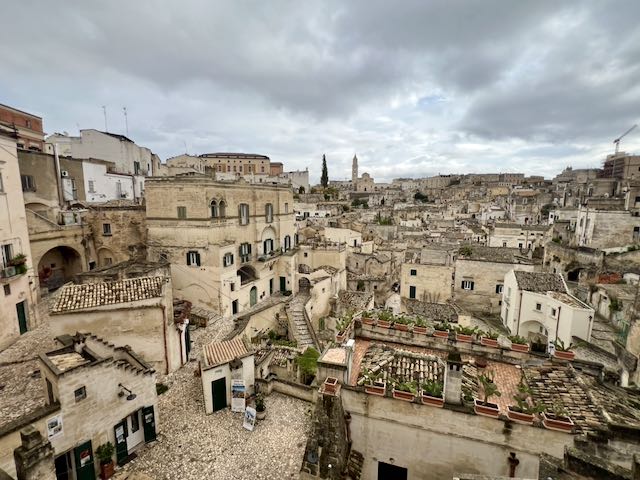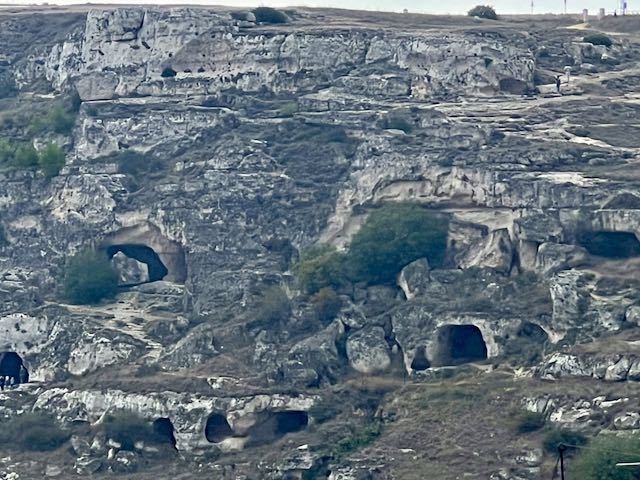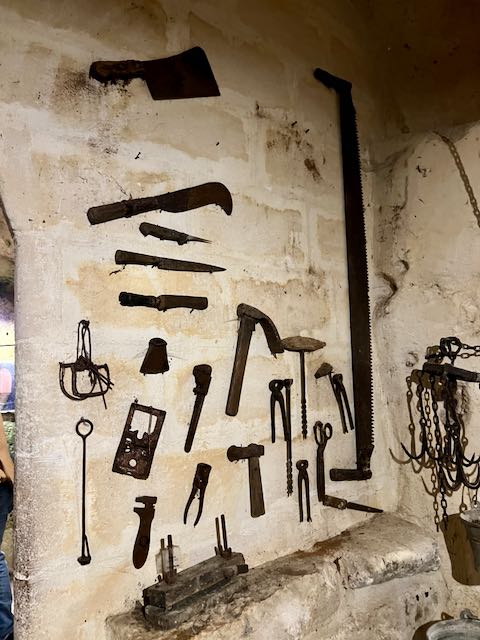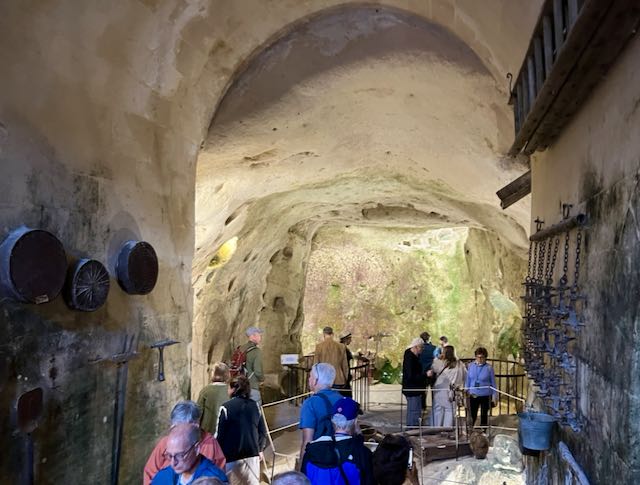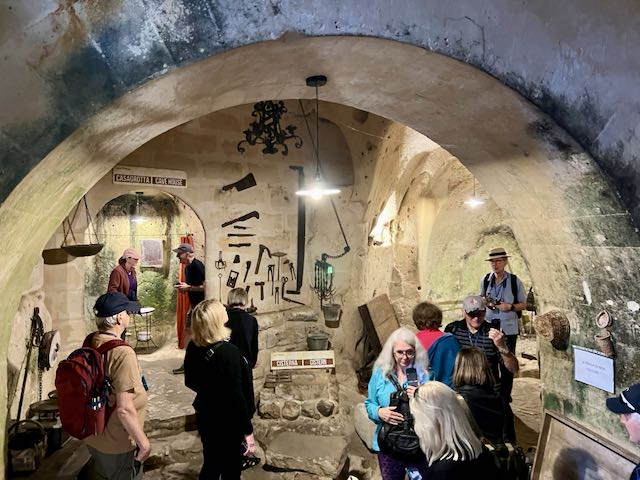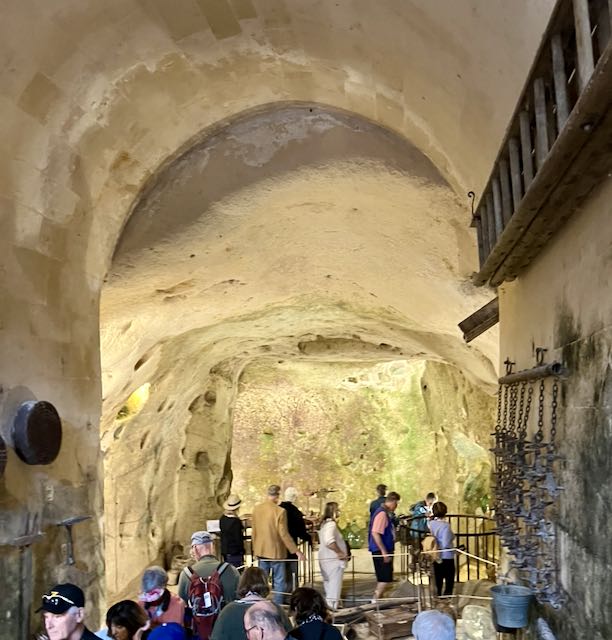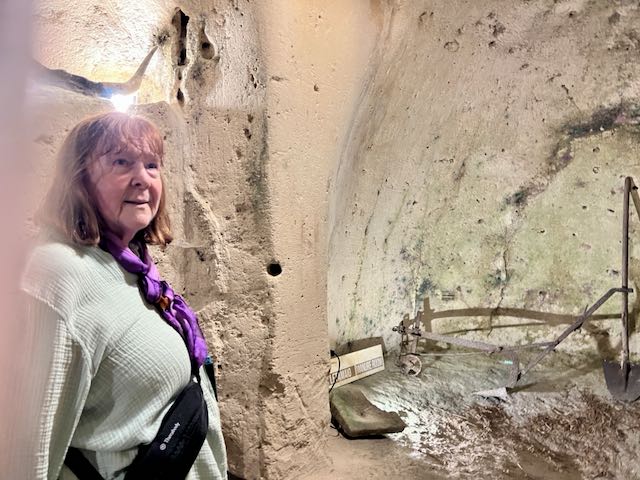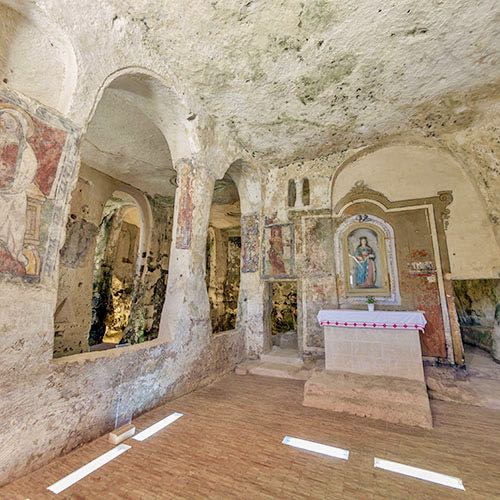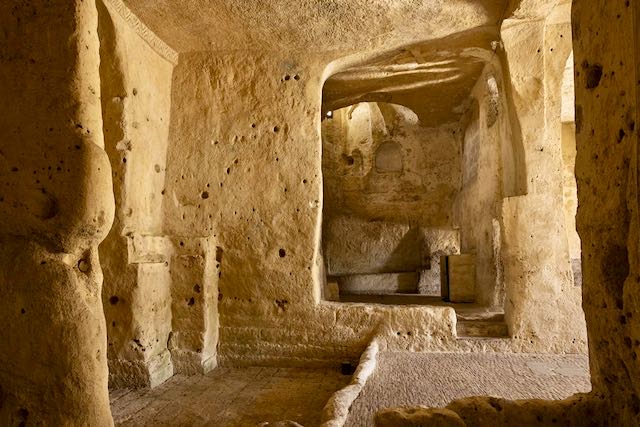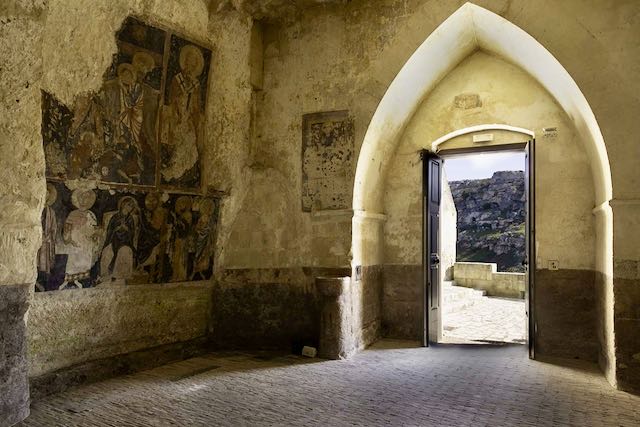Our visit today, was a walking stroll through the various alleyways in Sorrento’s romantic old quarter, stopping every so often to admire the attractions and savor local treats. Not much has changed since we were here all those years ago – still a bunch of lovely shops, restaurants in abundance and plazas with beautiful buildings.
Our trip this time, involved taking an elevator ride from the Port to Villa Comunale, the largest park in Sorrento. Although lush and leafy, the clifftop park is known more for its spectacular views of the bay and Mt. Vesuvius than its natural beauty.
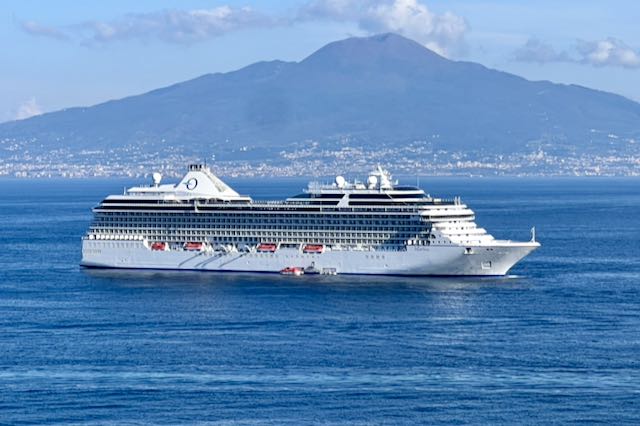
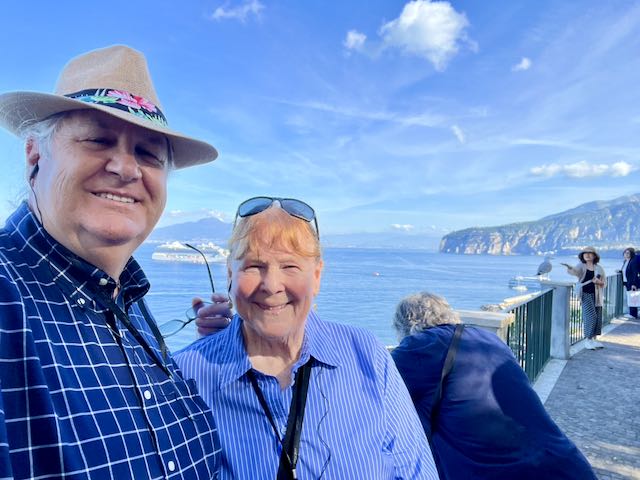
After gathering together, we started walking with Sara to the Old Quarter of Sorrento. Along the way Sara, our guide pointed out some of the most historical landmarks while offering insight into the founding of Sorrento.
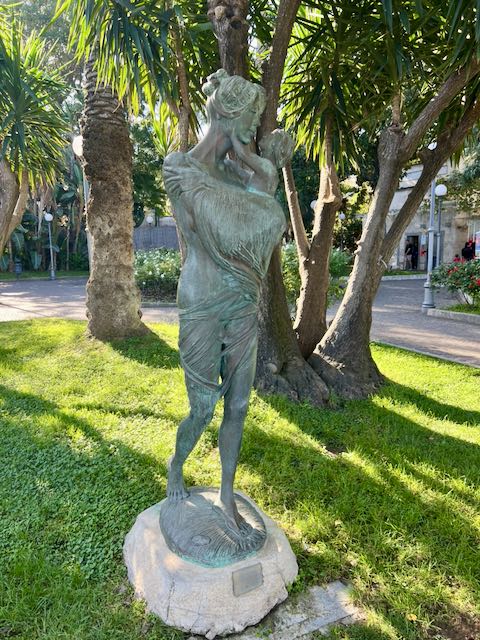
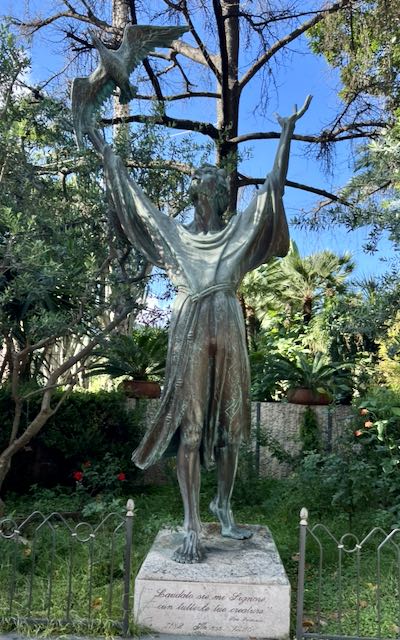
After a few minutes, we popped into the Cloisters of the Church of San Francesco – a peaceful and relaxing spot for sure. The open-air garden is used for weddings and various celebrations. The origin of the monastery dates back to the 8th century but it has been restored on several occasions.
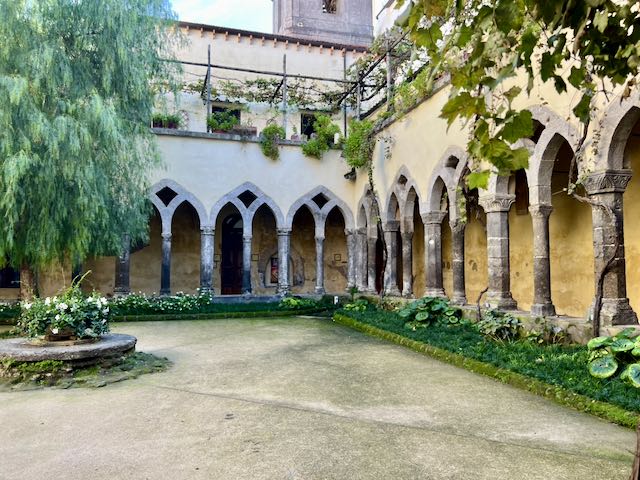
The ‘streets’ are very narrow and filled with artisan workshops. A couple of the streets had lovely decorations hanging along the way.



The general ambiance couldn’t be more inviting as we walked along amongst the local residents browsing for merchandise such as fine leather goods, embroidered cloths, and lots and lots of lemon products.
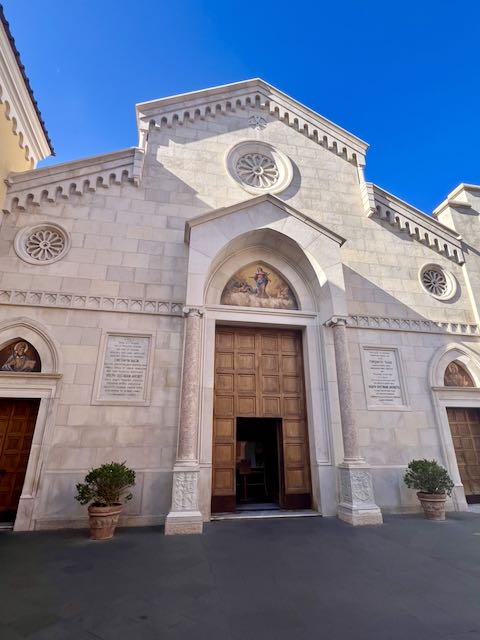
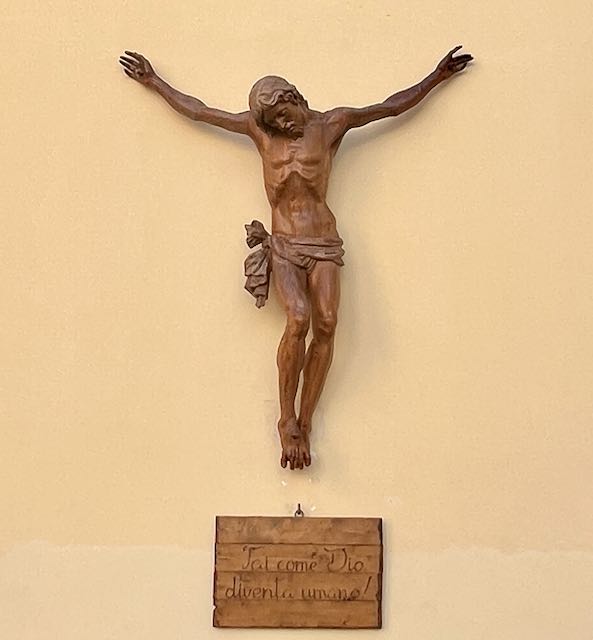
A visit to the Cathedral was next on the agenda. The Cathedral of Saints Philip and James, commonly known as the Sorrento Cathedral dedicated to Saints Philip the Apostle and James the Just, and has been the seat of the Archbishop of Sorrento-Castellammare di Stabia since 1986. It was previously the seat of the bishops and archbishops of Sorrento. It was first built around the 11th century and was rebuilt in the 15th century in Romanesque style. The cathedral bell tower has three stories, and is decorated with a clock. The base of the bell tower dates to the time of the Roman Empire. The façade dates from 1924. The main doors are of the 11th century from Constantinople.
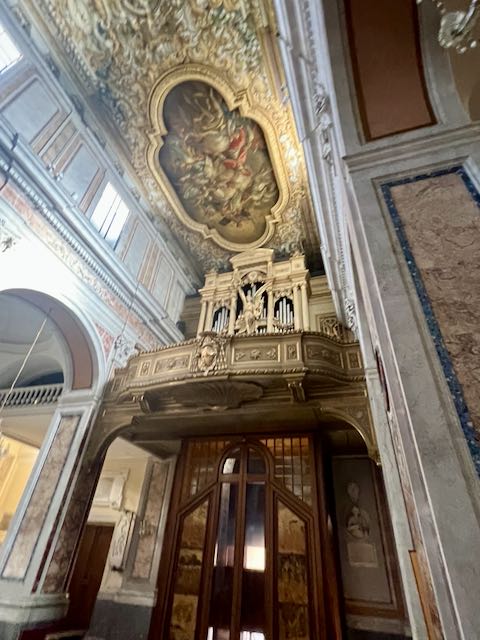

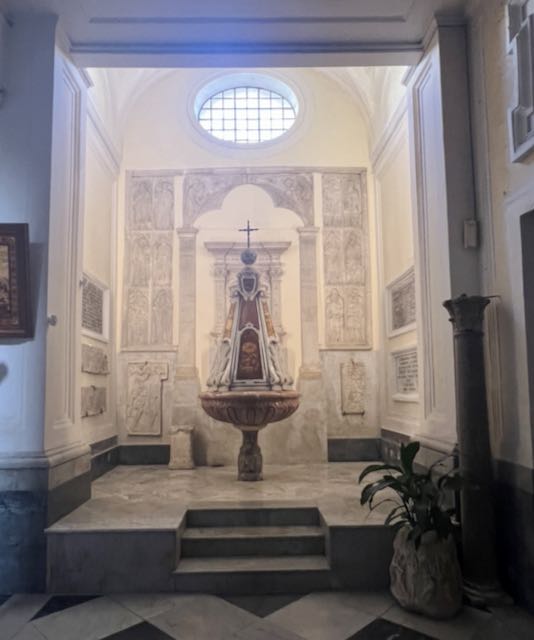
After the Cathedral, it was time for a break and a refreshing scoop of gelato, limoncello and lemon rind vanilla for Janeen and chocolate and pecan for David.. Once we had finished our cone, we stopped into a shop that did major wood inlays. There were an amazing number of tables and other wood inlay products – all with very high price tags for sure.
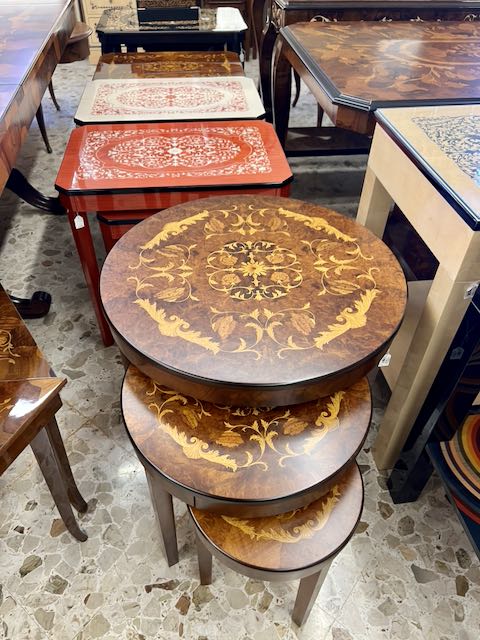
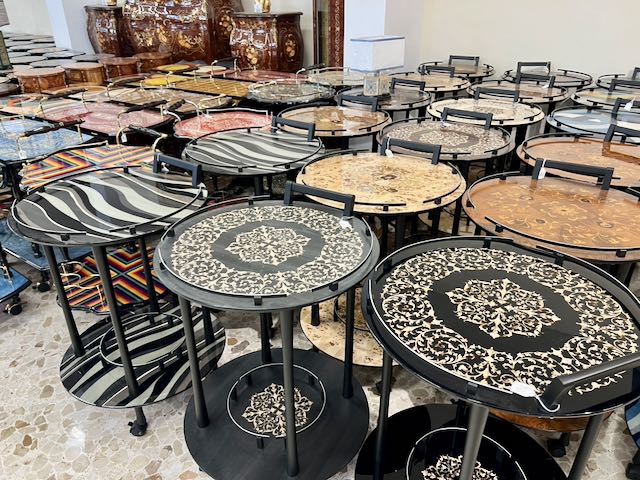
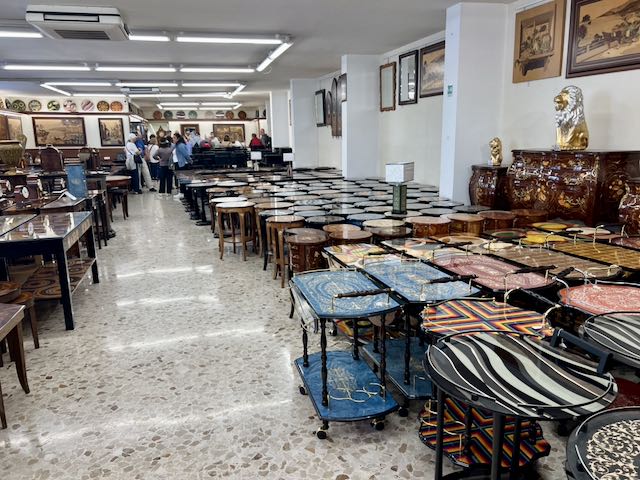
Just prior to heading back to the Ship, we stopped into this little Enoteca (wine shop) and found a lovely bottle of Taurasi to take back for our dinner in Toscana on the ship.
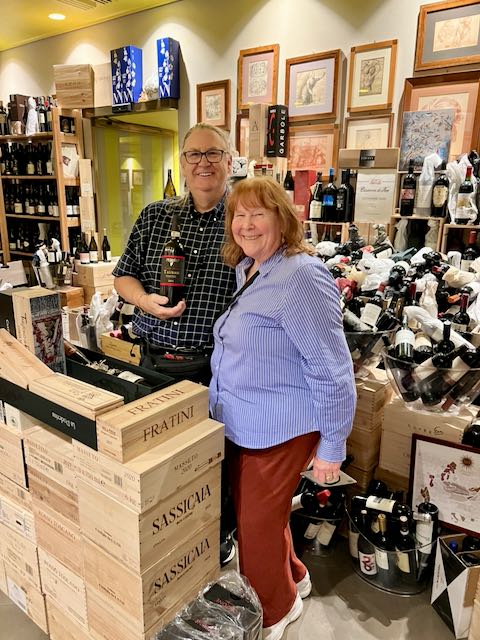
Don’t forget to leave a comment!
